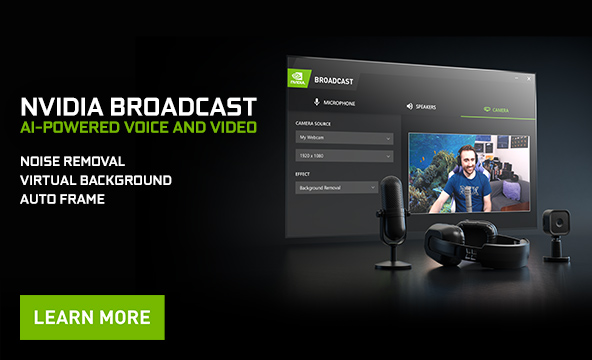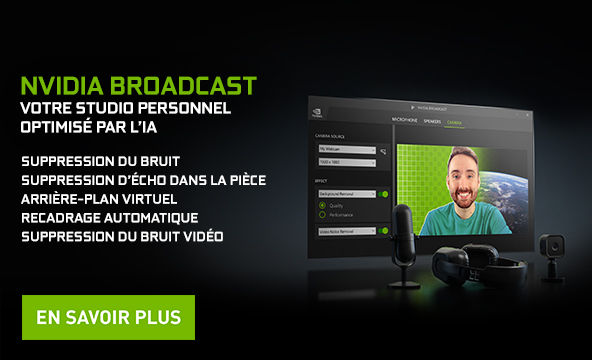

Perhaps if I'm lucky, Nvidia Broadcast will have a just as unbelievable ability to filter out a gamer across the hall as the impressive leaf blower video from earlier this year. My typical background noise disturbance is another human playing Halo with his pals, a scenario I haven't been able to put to the test just yet.
How to use nvidia broadcast engine software#
"Thanks to the feedback, plus Tensor Core and software optimizations, we’ve materially reduced the performance cost of the AI network while tripling the number of noise profiles supported," they say. It gets a bit tripped up by the edges of my hair or chair as I move around, but it's serviceable enough.Īs for the noise cancellation tech, it's the product of Nvidia's RTX Voice from earlier this year. Whaddaya know, the background blur and replacements both actually did pretty well even in my not terribly well-lit room. I've recently moved house and happen to be in possession of one textbook messy office as a result. I don't often have to show my face in video calls, nor do I do the livestreaming thing too often these days, but I decided to give the thing a go real quick just for kicks. To see this content please enable targeting cookies. Nvidia Broadcast calls for a "GeForce RTX 2060, Quadro RTX 3000, Titan RTX or higher".
How to use nvidia broadcast engine series#
The system requirements are a touch on the high side, or so they feel to someone like me who only just upgraded from my old 900 series GPU. "These features can be used beyond game broadcasting as well-from video conferencing at home with Zoom, to gaming with friends on Discord." "Not everyone has the luxury of a dedicated home studio, or can afford expensive cameras, microphones and greenscreens to improve their production quality," Nvidia say in their announcement post. Their new Nvidia Broadcast application is made for removing annoying noises and messy home offices from the background of your morning work calls or evening livestreaming sessions.

GPU capabilities may change and low-occupancy work might become a long, trailing tail that stalls another queue.If you need to wrest back some control over your environment in these unprecedented times, as they say, Nvidia have launched a new app for that. Do not implement low-occupancy workloads with the intention to align them with more work on the graphics queue.They are way more expensive and support different purposes. Semaphores/fences should not be used instead of resource barriers.Command lists/buffers are guaranteed to be executed in order of submission within a command queue by specification. Avoid using fences to synchronize work within the queue.Asynchronous workloads that take <0.2 ms are unlikely to show any benefits, as this is an approximate amount of time to resolve fences pre-hardware scheduling. Avoid tiny asynchronous tasks and group them if possible.For more information, see Hardware Accelerated GPU Scheduling. Multiple asynchronous compute queues will not overlap, due to the OS scheduler, unless hardware scheduling is enabled.Each additional queue adds processing overhead.Do not create queues that you don’t use.To avoid extra synchronizations and resource barriers, asynchronous copy/transfer work can be done in compute queue.Use GPU profiling tools (NVIDIA Nsight Graphics in GPU trace mode, PIX, or GPUView) to see how well work overlaps and fences play together without stalling one queue or another.Every excessive semaphore/fence can introduce a bubble in a pipeline. Wait and signal the absolute minimum of semaphores/fences.Using this technique can help find better-paired workloads. Asynchronous work can belong to different frames.Always verify whether the asynchronous implementation is faster across the different architectures.

That is, use z-prepass and BVH build or post-processing. For example, pair bandwidth-heavy tasks with math-heavy tasks. If running workloads asynchronously, make sure that they stress different GPU units.Improper synchronization across the CPU and GPU can lead to slow performance, race conditions, and visual artifacts. Synchronization in graphics programming refers to the coordination and control of concurrent operations to ensure the correct and predictable execution of rendering tasks.


 0 kommentar(er)
0 kommentar(er)
